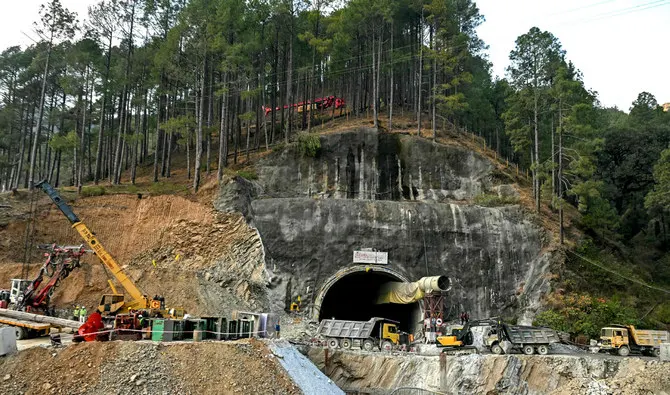India’s military brought in specialised equipment Sunday as efforts to free 41 trapped workers entered a third week, with digging ongoing in three directions after repeated setbacks to the operation.
The Indian air force said Sunday that they were “responding with alacrity”, as they flew in their third load since the partial collapse of the under-construction Silkyara road tunnel on November 12 in the Himalayan state of Uttarakhand.
Rescue officials said they called for a super-heated plasma cutter to be brought to the remote mountain location, after engineers driving a metal pipe horizontally through 57 metres (187 feet) of rock and concrete ran into metal girders and con-struction vehicles buried in the earth.
A giant earth-boring machine snapped just nine metres from breaking through. The plasma cutter will be used to remove the broken giant earth-boring drill and metal blocking the hori-zontal route, before digging will continue by hand.
Thick metal girders in the rubble are blocking the route, and using conventional oxyacetylene cutters to clear them is tricky from inside the confined pipe, only wide enough for a man to crawl through.
The air force said the “critical” kit came from the country’s Defence Research and Development Organisation, the government’s defence technology research arm, without giving further details.
Vertical drilling has also begun to dig 89 metres downwards, a risky route above the men in an area that has already suffered a collapse.
Work has also started from the far side of the road tunnel, a much longer third route estimated to be around 480 metres.
Uttarakhand Chief Minister Pushkar Singh Dhami Sunday visited the home of one of the trapped workers and apprised the family of the efforts being made for their rescue.
“We are working with full force to get all the workers out safely,” he said in a post on social media.
The workers were seen alive for the first time on Tuesday, peering into the lens of an endoscopic camera sent by rescuers down a thin pipe through which air, food, water and electricity are being delivered.
A basic telephone exchange has been set up at the site so that families of the trapped men — many of whom are migrant workers from poor families from far across India — could call in to speak to them.
Efforts have been painfully slow, complicated by falling debris and repeated breakdowns of drilling machines. Hopes that the team was on the verge of a breakthrough on Wednesday were dashed, with a government statement warning of the “challenging Himalayan terrain”.
For the distraught relatives of the trapped men, it has been an ordeal without an imminent end in sight.—AFP










